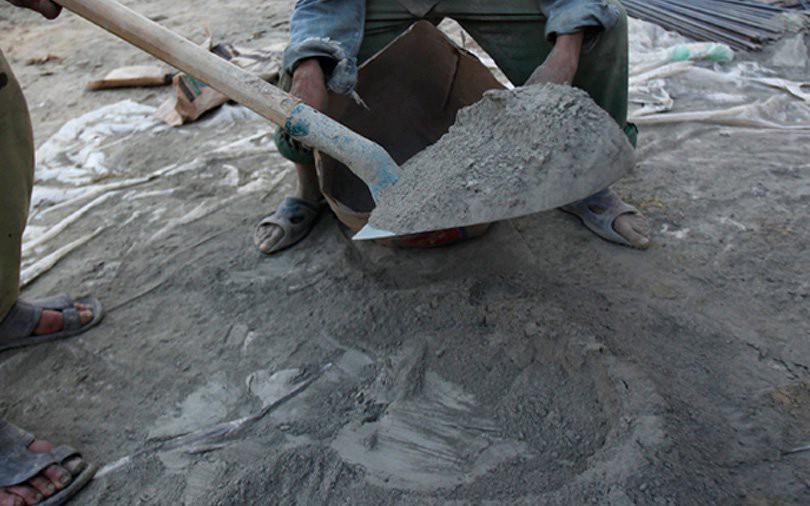- In a Nutshell
Pakistan is one of the most populous country in world with population figure over 200 million. Just as with other instances of over population, the concept of scarcity is applicable here as well, especially with regarding to housing. Currently, the housing shortage in the country is estimated around 10.4m out of which urban sector witnesses a deficit of 3.4m while the rural arena encounters a backlog of around 7m. Given this it could be derived that all sectors that are related to housing have a huge potential to grow particularly cement sector. Even though from 2012–13 to 2018–19, the contribution of cement sector to national exchequer has surged from Rs. 39b to Rs. 130.46b, yet there is a lot left unconquered. In 2017, owing to CPEC projects the sector as a whole decided to expand its capacity by 56% till 2021, as of now 74% of the planned expansion is already materialized and thus the overall capacity stands at 63.37m tons per annum.
- Market Dynamics
Presently, there are 17 players in the cement sector but there is a considerable disparity in market share based upon the regional divide. For north region, 14 out of these 17 entities are operation out of which Bestway Cement, Cherat Cement and D.G. Khan Cement control 45% of the northern market whereas the rest 55% is scattered among 11 others. On the other hand, only 6 cement players cater to the south region and the top three; Lucky Cement, D.G. Khan Cement and Attock Cement account for 77% of the overall market. During the last fiscal year for the first three quarters, cement industry saw a considerable growth, however owing to the necessary precautionary measures in light of COVID-19 along with other industries cement industry also took a hit. Holistically, the domestic demand was single handedly driven by the northern region while exports were catered by southern landscape.
In an attempt to live by its manifesto, in April 2020 the federal government announced a package focused on construction industry that relied upon an amnesty scheme, tax exemptions and a subsidy worth Rs 30b for its flagship “Naya Paksitan Housing Project” which shall eventually translate into a benefit for the cement industry. While the pandemic has limited the scope of construction activities across the country, yet some aspects are truly in favor of the cement industry. Oil and Coal prices globally have witnessed an unprecedented decline that certainly will reduce the cost of production. Furthermore, SBP has slashed the policy rate from 13.25% to 7%. A reduction of 625 bps surely will enlarge the pool of prospective investors as well as households who shall be interested in investing or securing a shelter, respectively.
- Equity Drop Since 2017: ‘Undervalued’
In 2016, Pakistan Stock Exchange was declared as Asia’s best performing market and in May of 2017, the index touched an all time high of 53127.24. However, since then the index was on a downtrend due to political instability and consequently within an year, PSX went from Asia’s best performing market to Asia’s worst performing market in 2017. It has been more than three years yet the market has failed to recover. While now PSX hovers just below 34000, still it is 36.12% below the peak reached in 2017. In other words, it could be concluded that on average the market depreciated by 36.12%.
Given this, cement sector had a considerably greater hit than average market which is one the prime reasons why cement sector is considered to be undervalued when compared with the rest of the market. Following is a list of some cement sector scrips and corresponding decline since May 2017.
– Maple Leaf Cement Factory Ltd (79%)
– Fauji Cement Company Ltd (61%)
– D.G. Khan Cement Company Ltd (64%)
– Lucky Cement Ltd (52%)
– Pioneer Cement Ltd (56%)
– Attock Cement Pakistan Ltd (63%)
This also implies that cement sector scrips on average shall swing more than the market either way. Thus, if the market reflects a bearish trend, cement sector shall display a greater decline, vice versa. As in the long run equity markets are expected to grow, so it could be inferred that cement sector scrips too will reflect a substantial increase in value, greater than the market rise.
- What Stops Growth
It has been established that there are great prospects of growth for construction industry which translates into growth for cement sector and that cement sector is fairly undervalued together with huge reduction in interest rates which may trigger construction activity, yet there are some hurdles that restrict growth of cement industry.
In Pakistan when a housing project is inaugurated, households are reluctant to be the first mover. Rather they expect builders to step in and act as a catalyst in this whole process. In recent times, government policies have been a major source of demotivation for builders. Builders are not expected to hold a property especially one that involves some aspect of construction, however, tax laws require a huge Capital Gain Tax (CGT) to be paid on a property held for a short period of time and thus the incentive for builders is pretty much reduced. It further limits the scope of construction at a housing project, making households more cautious.
In addition, while there has been a cut in development expenditure relative to what was incurred in last government’s tenure, the FBR property rates, which are used for tax calculation purpose, across the country have spiked by 20%-100%. Certainly, a higher tax liability awaits those involved in construction industry. In addition, taxes are to be paid to both federal government as well as provincial government which in total amount to five different tax heads. Naya Pakistan Housing Project until now rests on paper alone with no substantial ground work to rely upon, however, if it materializes it shall prove to be a game changer for the construction industry and related sectors.
It is worth mentioning that Cement Sector of Pakistan has a great future ahead and surely should be considered as a worthwhile long-term investment, however before investors could reap benefits out of this sector, policy makers should address the valid concerns of stakeholders promptly.

